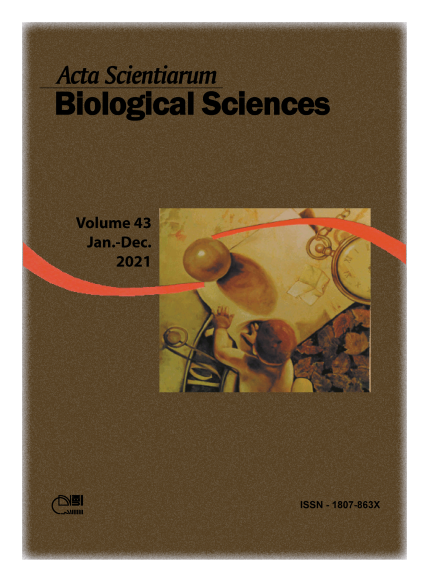In vitro cytotoxic and genotoxic effects of Cissus verticillata and Sphagneticola trilobata used for treatment of Diabetes Mellitus in Brazilian folk medicine
Resumo
Cissus verticillata and Sphagneticola trilobata have been used in Brazilian folk medicine for Diabetes Mellitus treatment, although their pharmacological and toxicological profile has not been clearly established. Thus, the aim of this study was to evaluate the preclinical toxicity of the aqueous extracts of C. verticillata and S. trilobata. The main groups of secondary metabolites were investigated, and the species differed by the presence of coumarins in C. verticillata and by tannins in S. trilobata extracts. The highest contents of phenolic compounds and flavonoids were quantified in C. verticillata infusion with 2.594 ± 0.04 mg equivalents of gallic acid g-1 of extract and 1.301 ± 0.015 mg equivalents of catechin g-1 of extract, respectively. While the extract of S. trilobata showed minimum values of these compounds, with 0.002 ± 0.001 mg equivalents of gallic acid g-1 extract and 0.005 ± 0.0004 mg equivalents of catechin g-1 of extract, respectively. These differences implied the results of in vitro antioxidant activity evaluated using ferric reducing antioxidant power (FRAP), in which the sample of C. verticillata at 5 mg mL-1 showed a value of 122 µM ferrous sulfate equivalents (FSE), while S. trilobata showed 0.93 µM FSE at the same concentration. With respect to cytotoxic assay with murine fibroblast cell line (3T3) only S. trilobata exhibited cytotoxic effects measured by MTT and Sulforhodamine B assays, evidenced by the cell viability value of approximately 16%, in both tests after 24 and 72 hours of exposure of the cells to 5 mg mL-1 of the extract. Comparatively, at 5 mg mL-1 the C. verticillata extract showed cell viability of 142% and 95%, respectively, after 24 hours of cell exposure. On the other hand, both species showed genotoxic profiles evidenced by chromosomal aberrations by Allium cepa bioassay, observed by the higher percentage values of chromosome bridges, chromosome loss, and disturbed anaphase for all concentrations of both extracts than those of the negative control. The results support the characterization of the toxicological profile for both species and create an alert regarding the use of S. trilobata, which should be avoided.
Downloads
DECLARAÇÃO DE ORIGINALIDADE E DIREITOS AUTORAIS
Declaro que o presente artigo é original, não tendo sido submetido à publicação em qualquer outro periódico nacional ou internacional, quer seja em parte ou em sua totalidade.
Os direitos autorais pertencem exclusivamente aos autores. Os direitos de licenciamento utilizados pelo periódico é a licença Creative Commons Attribution 4.0 (CC BY 4.0): são permitidos o compartilhamento (cópia e distribuição do material em qualqer meio ou formato) e adaptação (remix, transformação e criação de material a partir do conteúdo assim licenciado para quaisquer fins, inclusive comerciais.
Recomenda-se a leitura desse link para maiores informações sobre o tema: fornecimento de créditos e referências de forma correta, entre outros detalhes cruciais para uso adequado do material licenciado.












1.png)




3.png)













